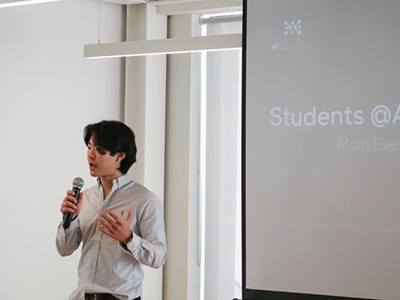The past year has seen bans on the use of smartphones in schools in some 60 countries, including the Netherlands, France and the United States. The restrictions come amid spreading worry that social media can harm children’s mental health. It’s a valid concern. But in the heat of the discussion, other technologies used by children — such as educational technology (edtech) — are flying under the radar.
As director of the International Centre for EdTech Impact, I think that’s a mistake. Edtech has the power to improve children’s learning — but it needs scrutiny.
Scientists are building giant ‘evidence banks’ to create policies that actually work
The edtech industry is booming and is projected to be worth a staggering US$600 billion globally by 2027. About 500,000 educational apps are available, ranging from literacy apps to mathematical games. In the United States, each school district used about 2,700 such tools last year. And many philanthropic funds are helping low- and middle-income countries (LMICs) to distribute edtech in schools.
I’ve seen how educational apps have helped children to learn — for instance, they’ve boosted maths and reading skills in Malawi, reducing gender disparities in classrooms. And they are sorely needed. Around 70% of ten-year-olds in LMICs struggle to read and comprehend simple texts. And as many as 70% of nine- and ten-year-olds in low-income areas of the United States cannot read at a basic level.
But, with little regulation and few enforced standards, I worry that governments, schools and families worldwide are collectively spending huge sums of money on ineffective apps that serve only to teach children to play manipulative games. I want researchers, developers and investors to come together to improve the quality of educational tools.
A 2023 report by the United Nations organization UNESCO reveals that there are few robust data on the value of edtech tools (see go.nature.com/4hf8f7d). Apps are seldom vetted or validated by researchers. And companies’ own product analyses often focus on time spent on screens, not on how apps address educational gaps.
Governments should stipulate that apps cannot be sold as ‘educational’ unless rigorous research has demonstrated that they improve children’s learning and well-being. National certification schemes based on independent research and catalogues of recommended resources would help teachers to decide which apps to buy.
The great rewiring: is social media really behind an epidemic of teenage mental illness?
Collaboration is crucial. Simply relying on regulations would empower a few big players who have the financial capabilities to follow the rules. A collaborative approach is more likely to focus on children and to spur innovation among start-up firms and local entrepreneurs.
Superficial, unpaid advisory roles are a thing of the past — companies need committed specialists to design, evaluate and innovate effectively. Policymakers should thus provide funding to encourage partnerships. Finland and some US universities, for instance, are compensating scientists for spending time on researching educational tools through university-based edtech accelerators. A European Union-funded project to bridge edtech academia and industry is exploring how scholars, through secondments and mentoring, can spur innovative studies.
Incentives are also needed to improve data availability. Scientists need raw data about existing apps; companies collect this information but often keep it private. A shared repository to which both scholars and firms can contribute has long been a dream for edtech researchers. The Tools Competition 2025 — an international contest for edtech innovation run by a consortium of organizations — will include a prize pot for technologies that use open data sets. It’s a good first step, but more such initiatives are needed.
Together, researchers and developers must define the educational outcomes that each app aims to support — and determine how to measure them. Around 30 educational apps are launched each month, and some 65 frameworks can be used to assess their effectiveness. Scholars struggle to compare apps that have been evaluated in distinct ways, and teachers and families can find the mass of disparate data and methods confusing.
Ready or not, AI is coming to science education — and students have opinions
Working out how to measure outcomes will be no easy task. Consider a seemingly simple app for reading stories. Such an app will influence language development, reading motivation, critical thinking and more. These aspects of learning will all be experienced differently by native and non-native speakers, people with learning difficulties and so on. Randomized controlled trials — considered by some to be the gold standard for assessing edtech — need to be supplemented with diverse measures of success that take this variability into account. Efforts could involve running focus groups with teachers and children, ongoing pedagogical evaluations, or tracking families over time to assess reading motivation, for example.
Taking steps towards collaboration will ensure that more tools are grounded in science. A bigger challenge will be to convince businesses that research is a valuable learning process, not a service to confirm positive impact and boost sales.
With well-designed tools, edtech could improve the prospects of many children. If nothing is done, badly made tools will reinforce educational gaps by disrupting learning, misrepresenting student performance and promoting investments in ‘snake oil’, rather than in education.





